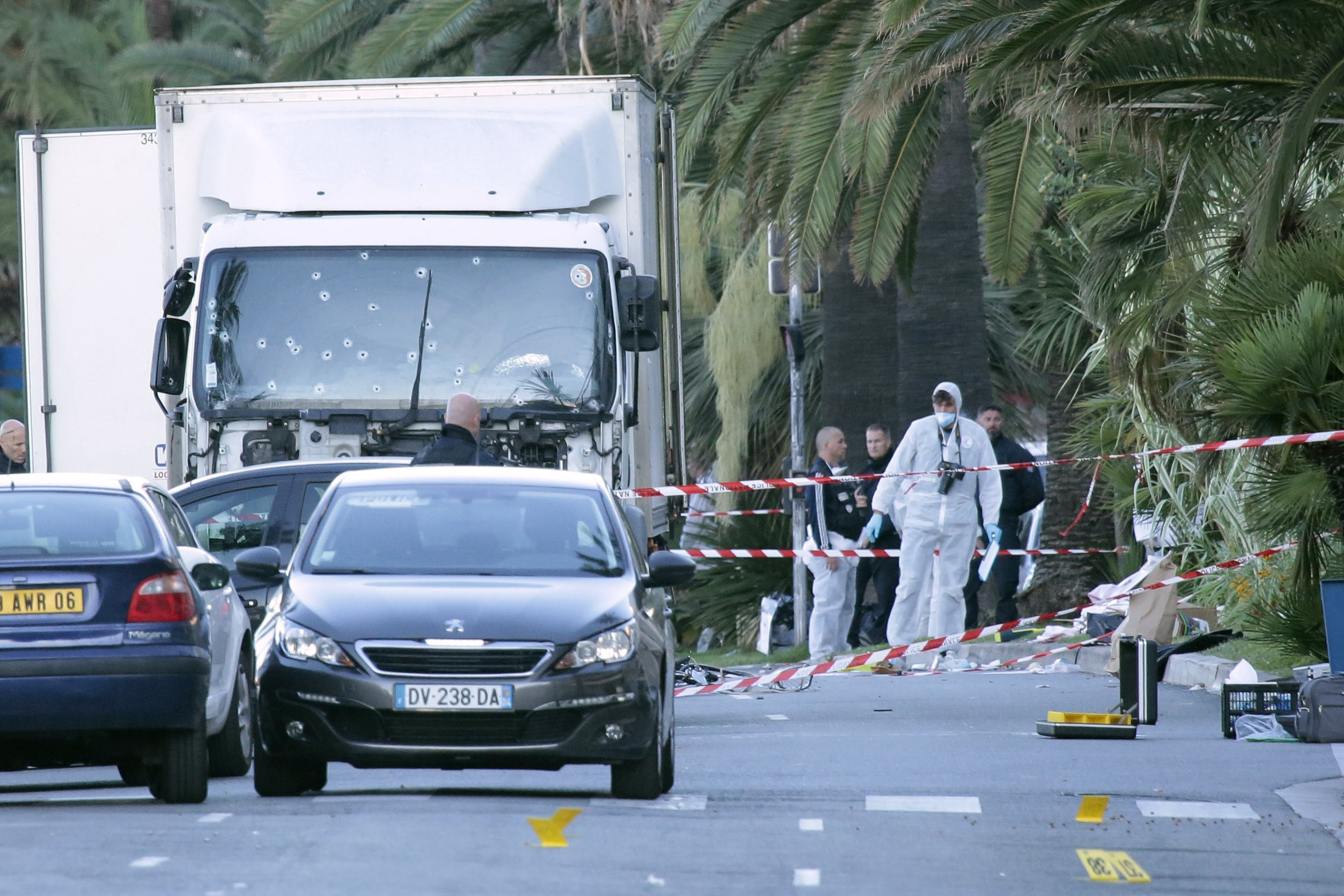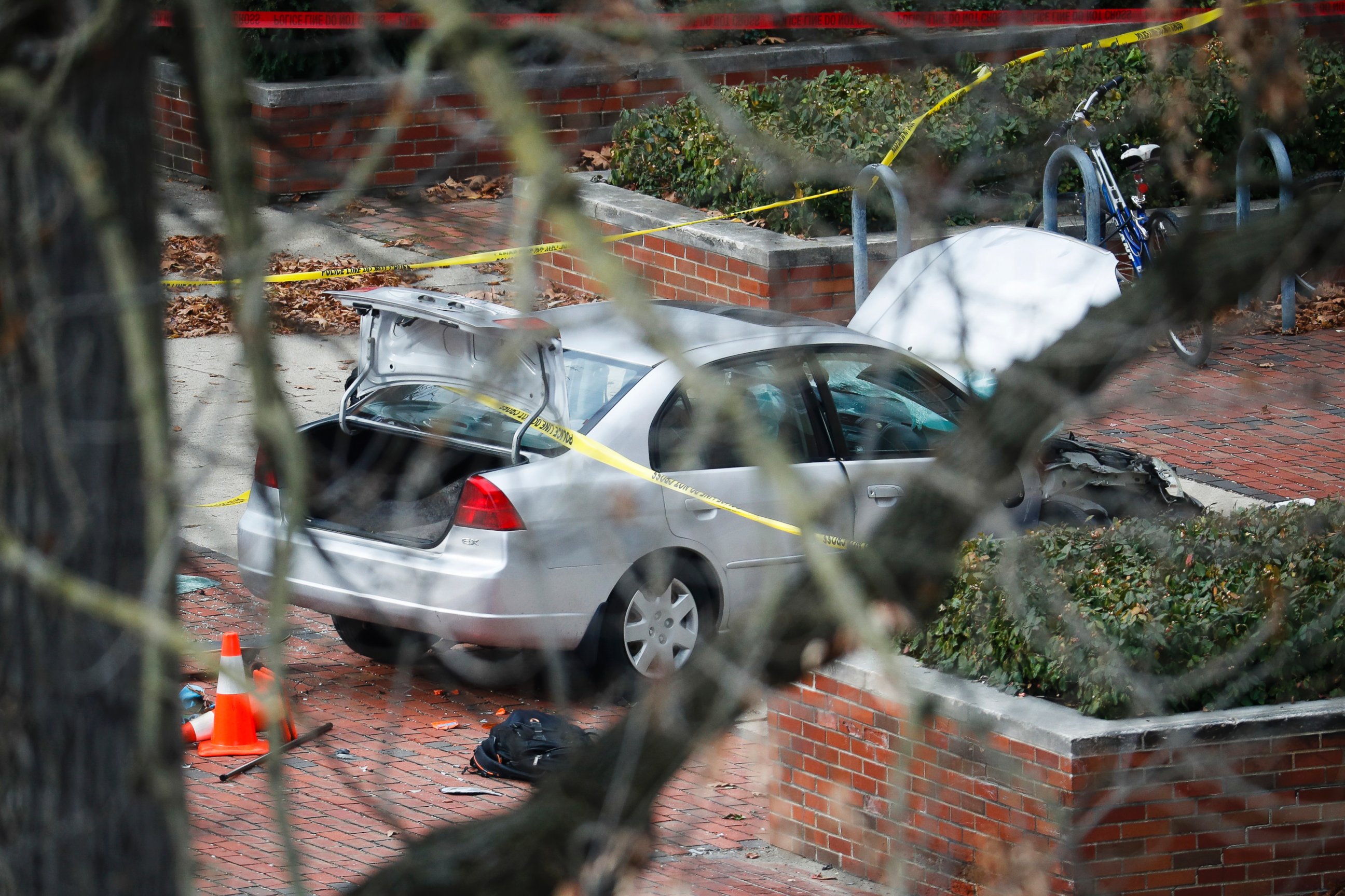The New Tools of Terror: Vehicular Violence at Center of Recent Attacks
Bombs have given way to vehicles in recent attacks, and not by coincidence.
— -- With the news that ISIS has claimed responsibility for Monday’s attack in Berlin, the world is seeing another example of terrorists trading bullets and bombs for cars and trucks as a way to more discreetly unleash carnage across the world.
On Tuesday afternoon, SITE Intelligence reported that the ISIS terror group has claimed responsibility for the attack, calling the fugitive terror truck driver a “soldier of the Islamic State,” that worked “in response to calls for targeting nationals of the international coalition.”
The attack follows an increasingly familiar pattern. Over the past six months, attackers have used vehicles to mow down crowds during Bastille Day celebrations in Nice, France; to ram a pack of students on the campus of Ohio State University; and, most recently, to plow through a Christmas market in Berlin.
These incidents are not coincidental, however.
Since at least the summer of 2014, the ISIS terror group has been calling on its followers to use vehicles in attacks on innocents.
“If you are not able to find an IED [improvised explosive device] or a bullet, then single out the disbelieving American, Frenchman, or any of their allies,” ISIS spokesman Abu Muhammad Al-Adnani said in Sept. 2014, according to SITE Intelligence. “Smash his head with a rock, or slaughter him with a knife, or run him over with your car, or throw him down from a high place, or choke him, or poison him.”
In Oct. 2014, a Canadian soldier was killed and another was injured when a radicalized man ran them down at a strip mall in Quebec with his car.

And this past summer, in what is the deadliest vehicle-borne attack in recent memory, 86 people were killed when a radicalized man used a semi-truck to plow through revelers who had assembled to celebrate Bastille Day in Nice, France.
Seemingly finding success in this method of attack, the ISIS terror group has amplified its propaganda.
This past November, ISIS released an online guide to vehicular attacks, suggesting targets like the Macy’s Thanksgiving Day Parade as prime targets.
“Though being an essential part of modern life, very few actually comprehend the deadly and destructive capability of the motor vehicle and its capacity of reaping large numbers of casualties if used in a premeditated manner” the digital magazine reads, citing the Nice attacker as “superbly” demonstrating the effectiveness of vehicle-borne attacks.
The document goes on to state: “Vehicles are like knives, as they are extremely easy to acquire. But unlike knives, which if found in one’s possession can be a cause for suspicion, vehicles arouse absolutely no doubts due to their widespread use throughout the world.”
This new method of attack can’t be taken lightly, Matthew Olsen, an ABC News contributor and the former director of the National Counterterrorism Center, explained.
“This level of lethality – this is a real concern because this is a really difficult type of attack to stop,” he said. “It’s not sophisticated, it’s not hard to pull off, somebody simply has to get hold of a large truck and drive it into a crowd.”
And while the booklet evoked imagery of American targets like the parade, U.S. officials have been wide-ranging in their warnings.
In guidance issues to Americans abroad on Nov. 21, the U.S. State Department warned of “the heightened risk of terrorist attacks throughout Europe, particularly during the holiday season.”
In particular, the State Department said that travelers and expats “should exercise caution at holiday festivals, events, and outdoor markets.”
In light of the guidebook’s publication, authorities in New York ramped up security around the iconic Thanksgiving parade, which was described as “an excellent target,” by the propagandists.
And while the parade went down without a hitch, authorities shouldn’t write off the propaganda as hot air, Olsen said.
“The use of propaganda is worrisome because we’ve seen this propaganda have an impact and actually inspire individuals to take action,” he said.

Just a few days later, a student at Ohio State University used a car to ram a group of people who had gathered outside a lecture hall after a fire alarm sounded, before going on a slashing spree. Nobody was killed in that attack, but 13 were injured.
The FBI later said that the student was inspired by the ISIS and Al-Qaeda terror groups.
And, just a few weeks later, on Monday, a truck was used to mow down crowds gathered a traditional Christmas market in Berlin.
While authorities in German hunt for the suspect in that case, they are describing the incident as a terrorist attack.
In the meantime, ISIS has wasted little time claiming an attack that comes straight from their playbook.




